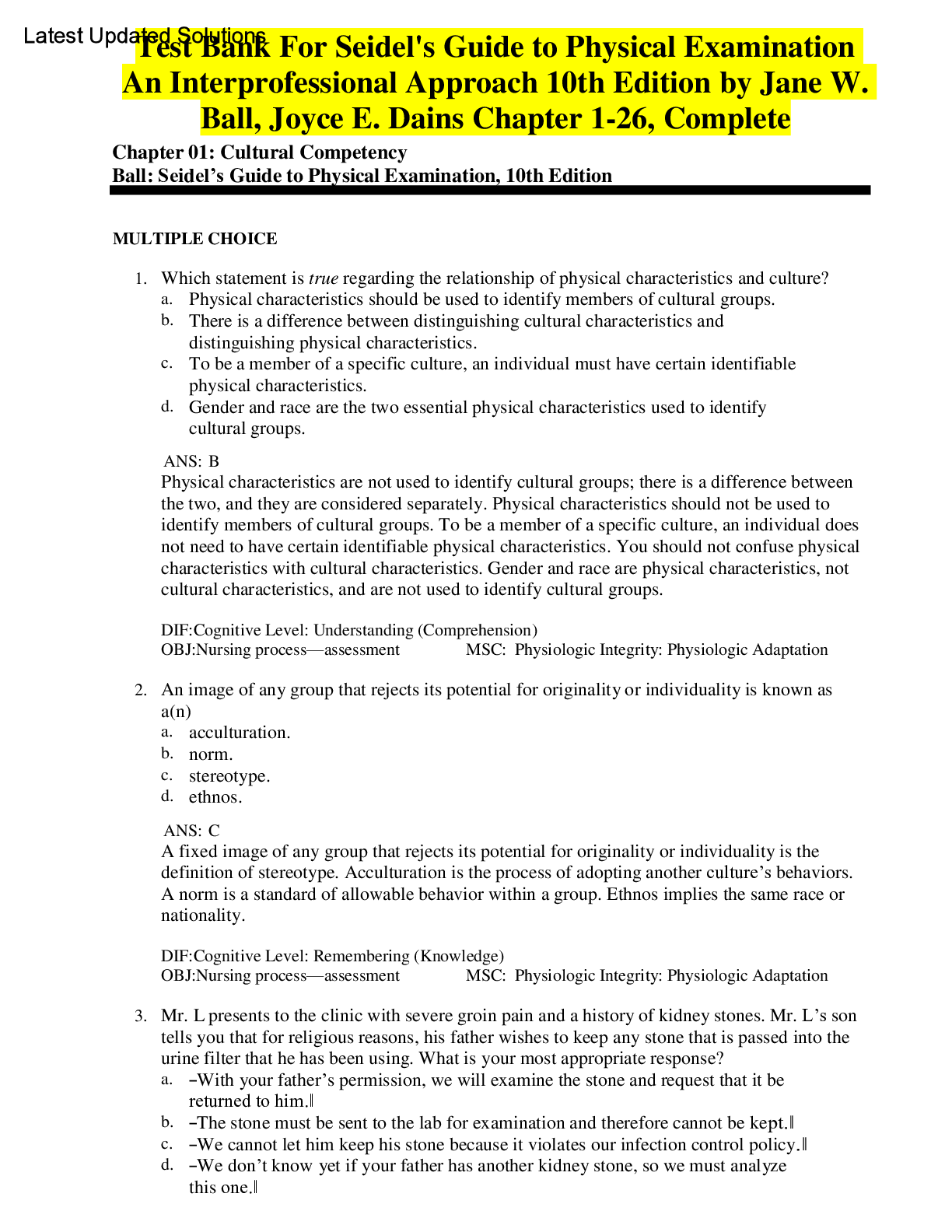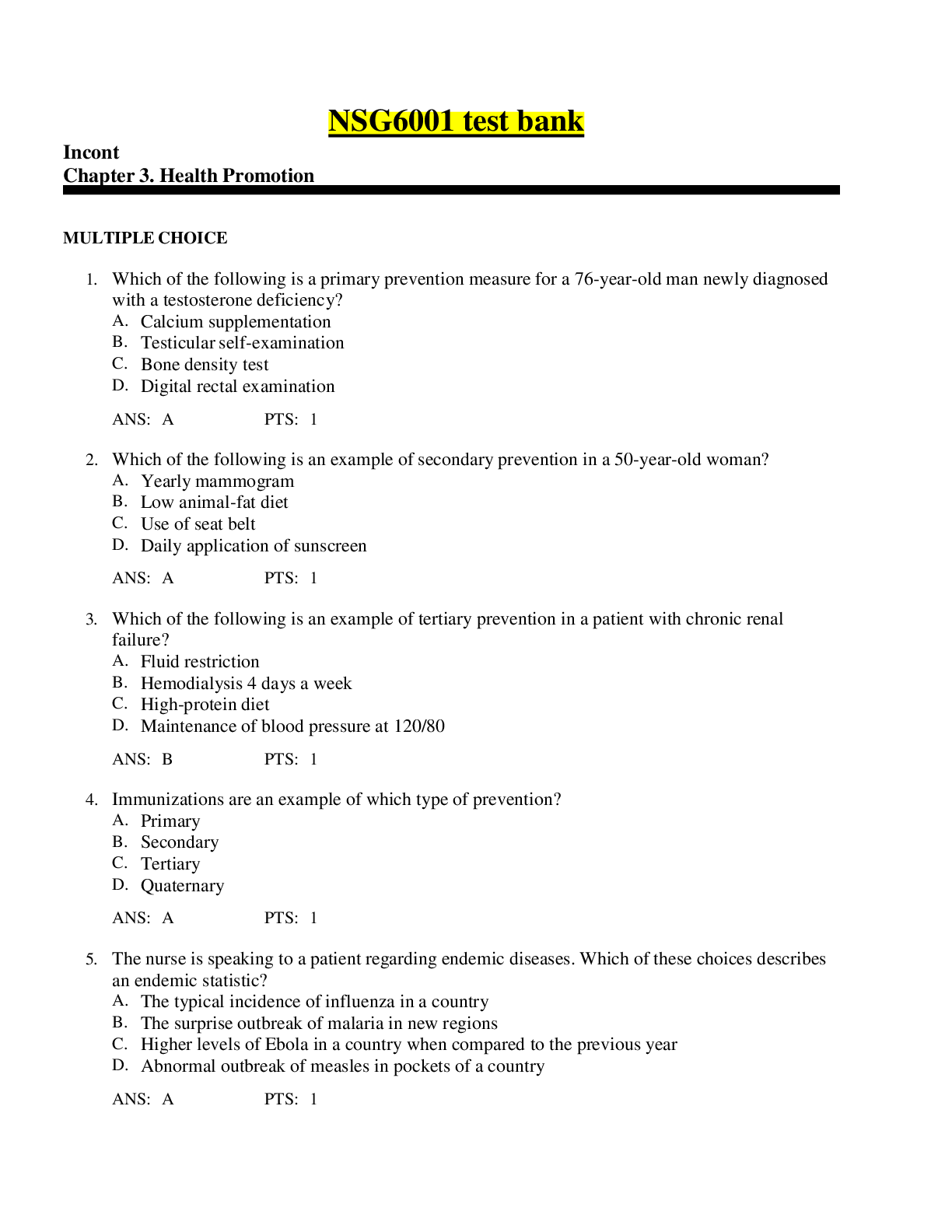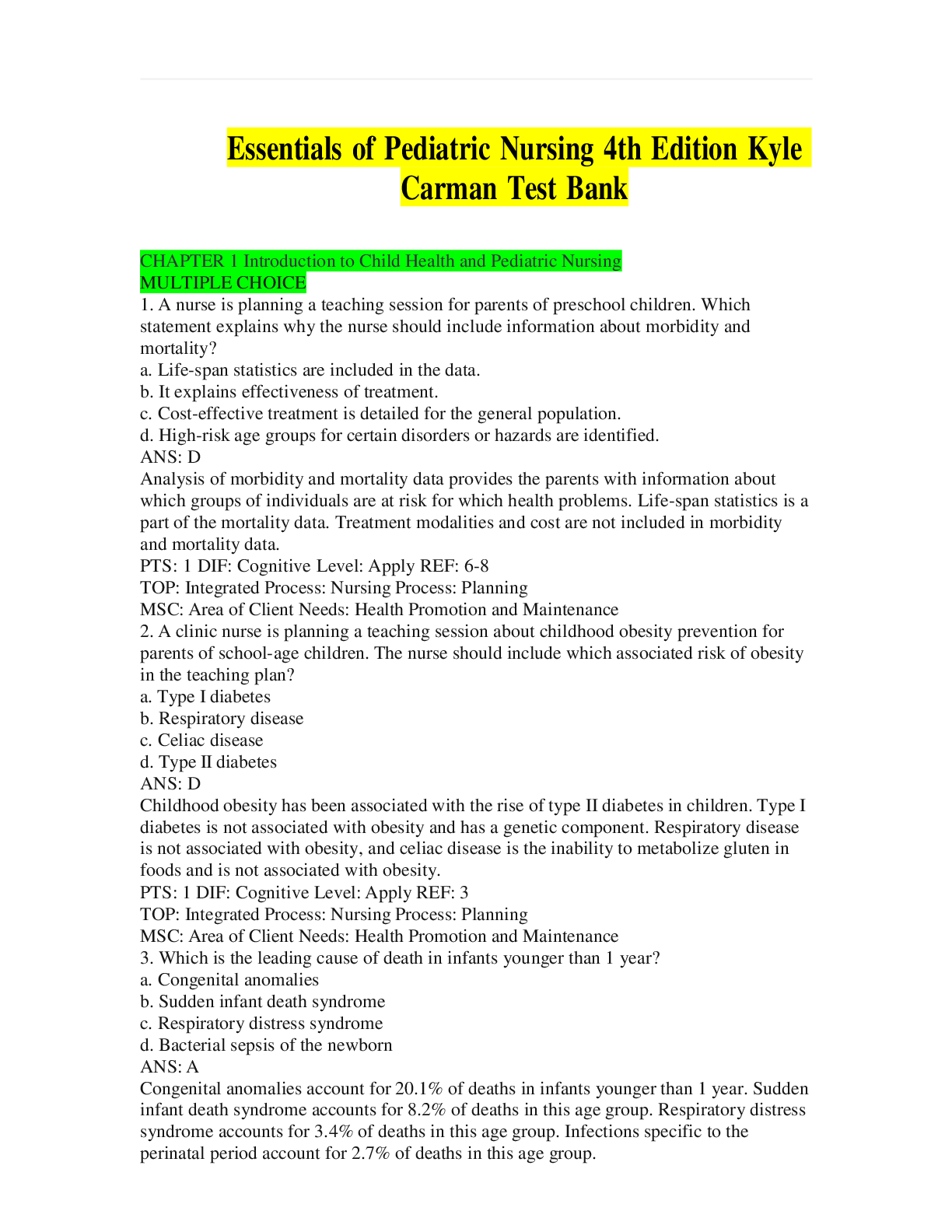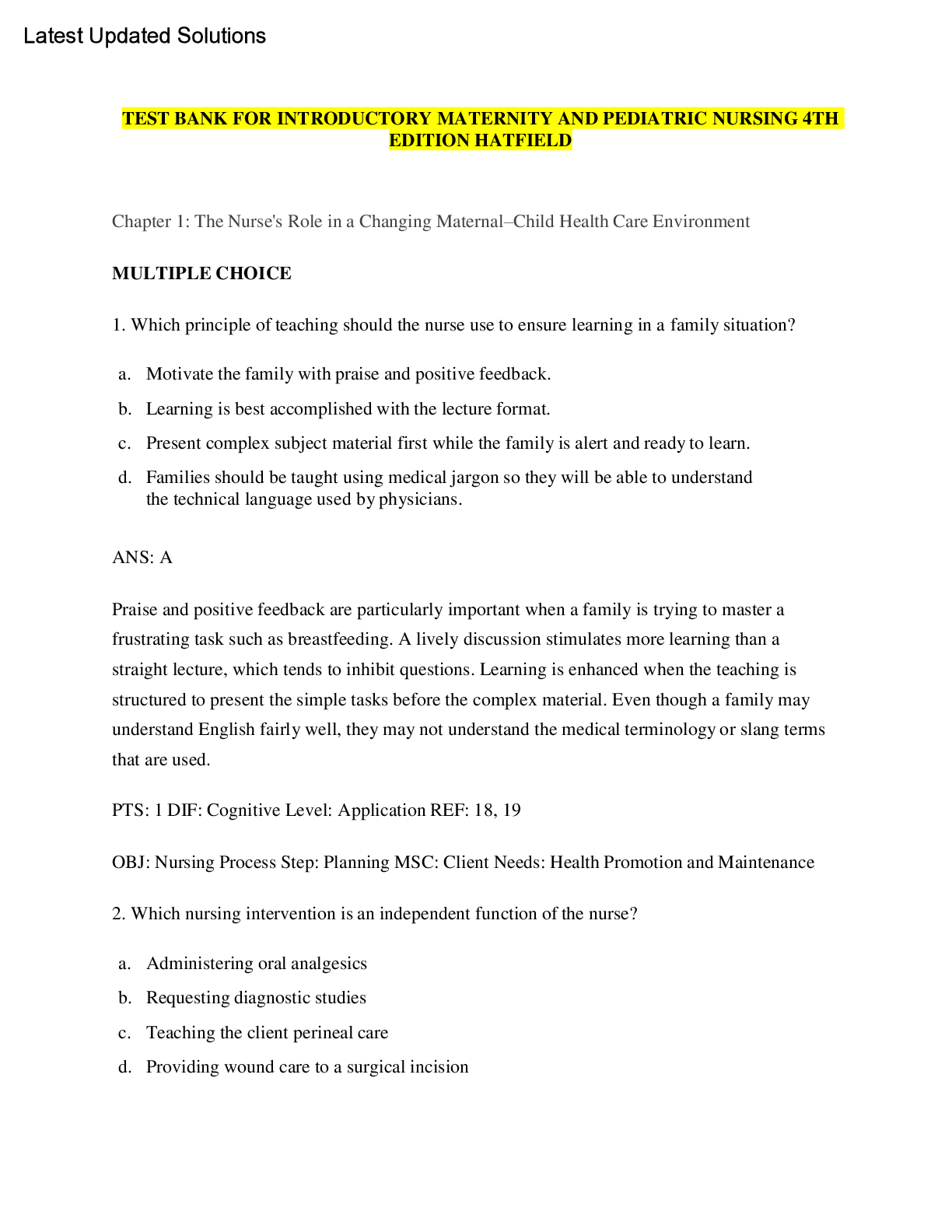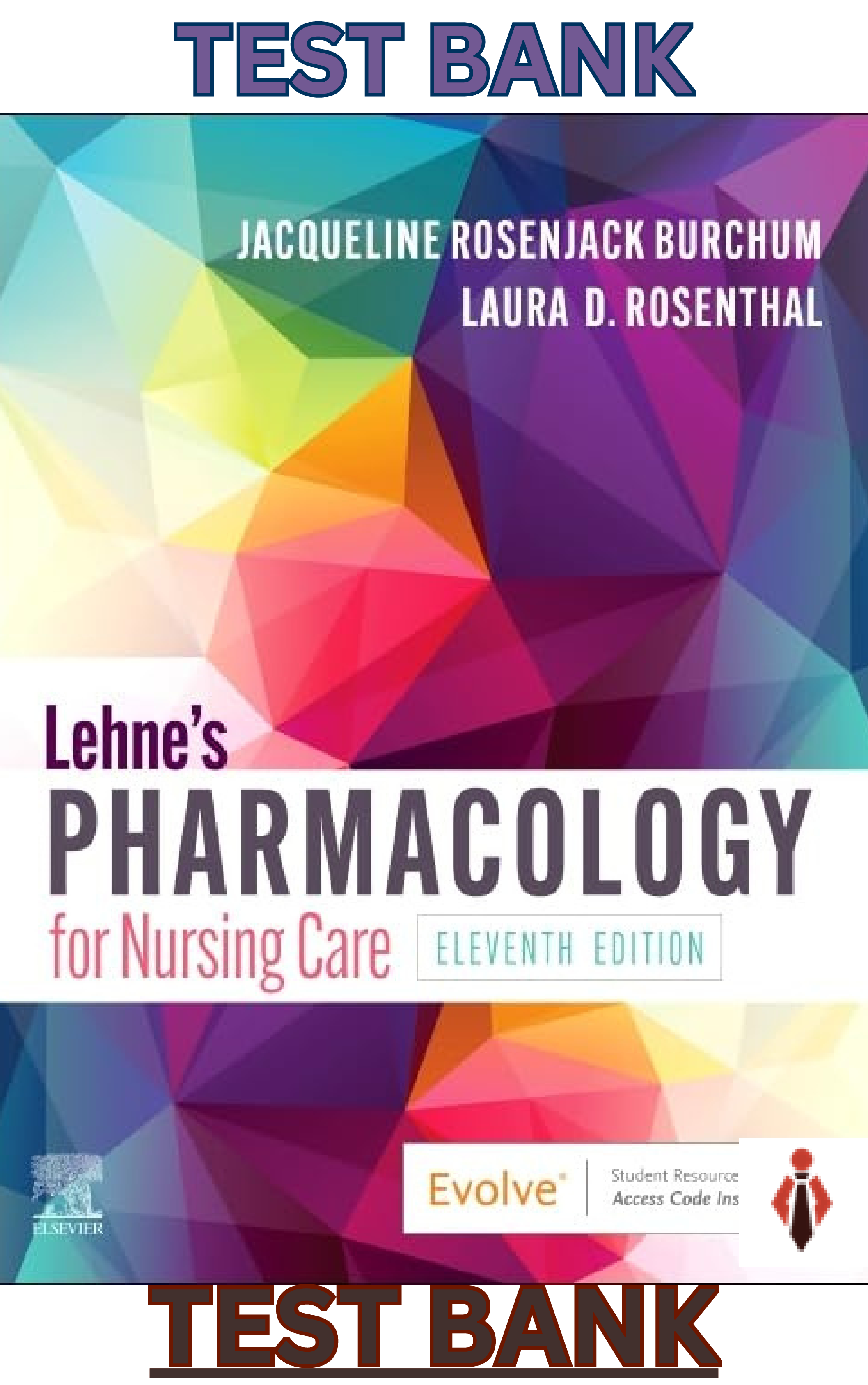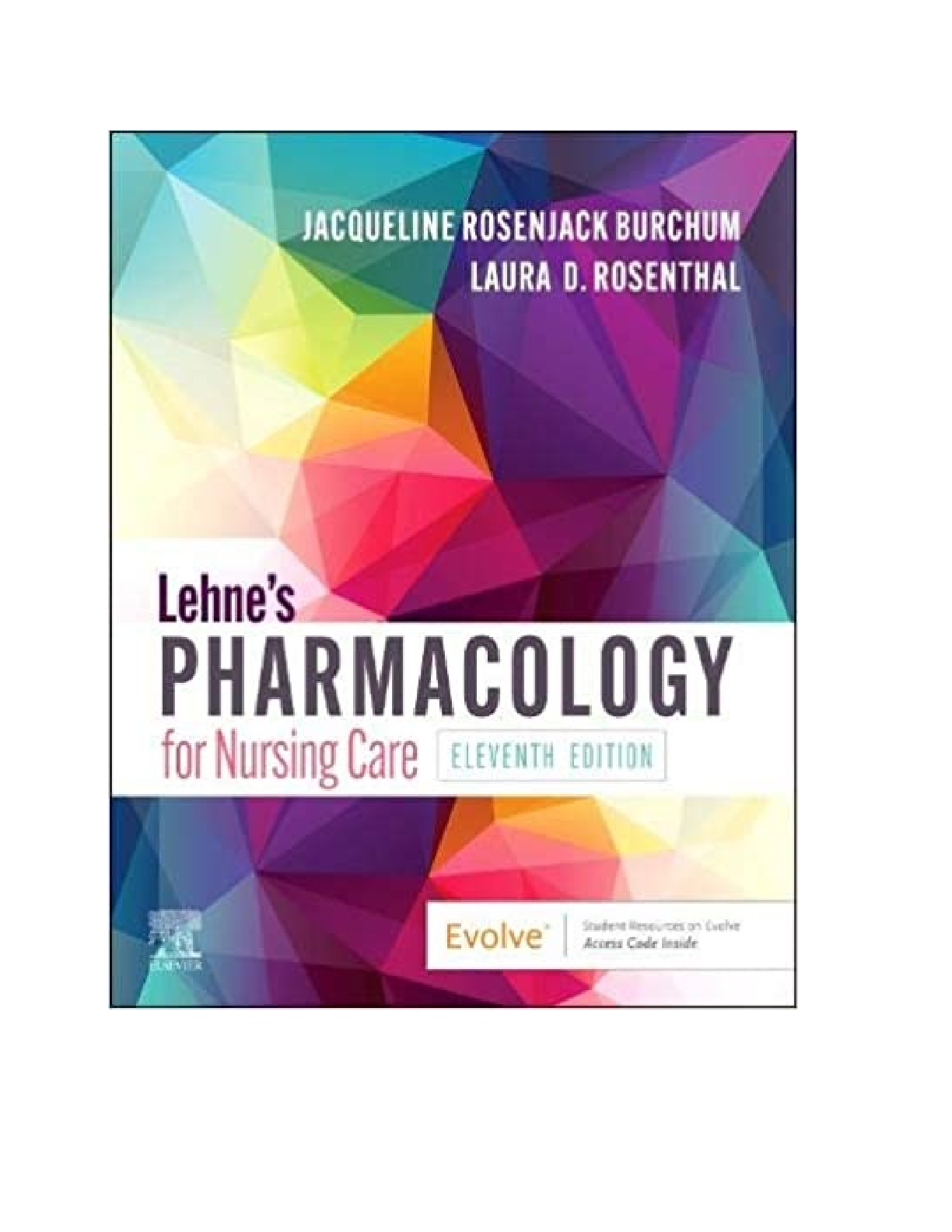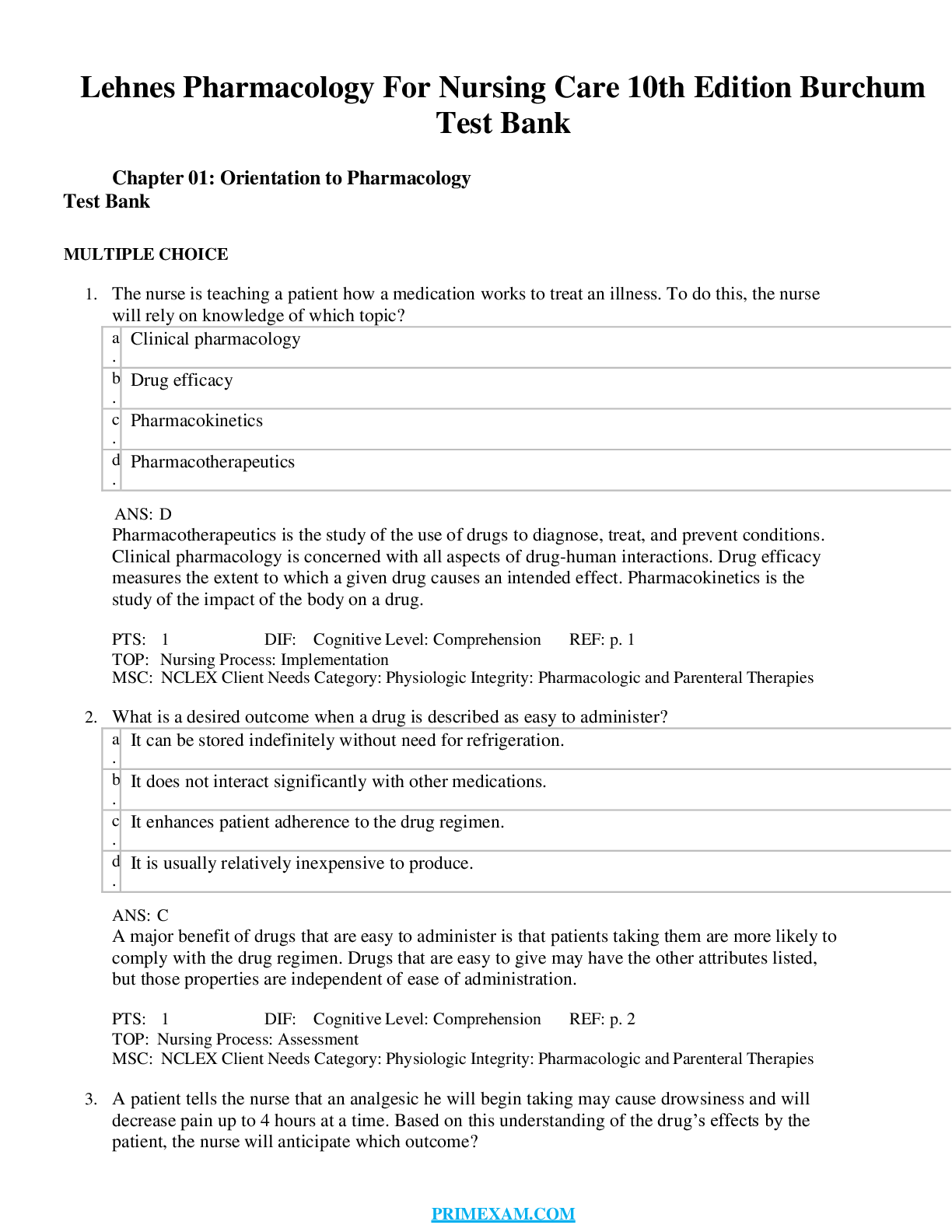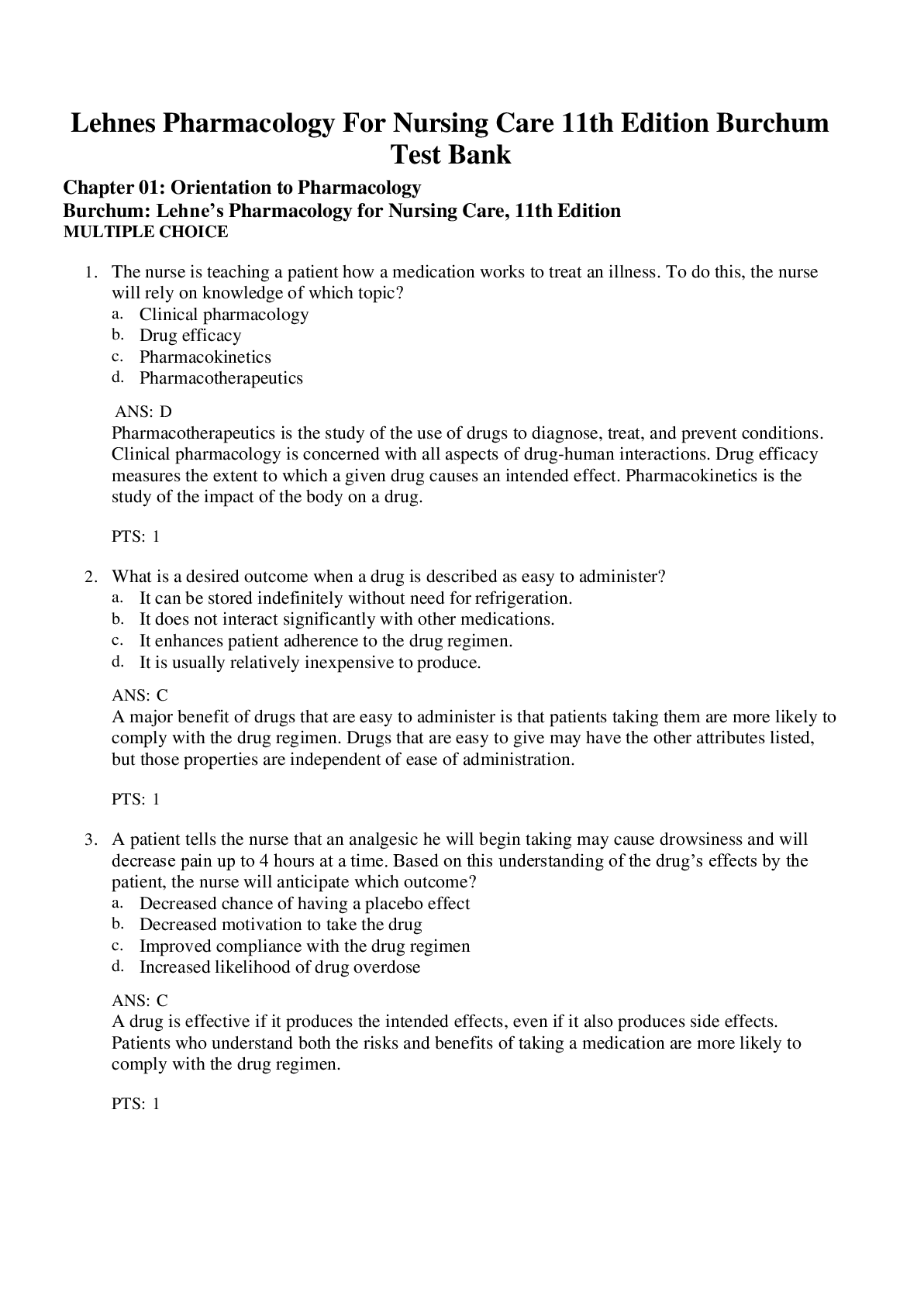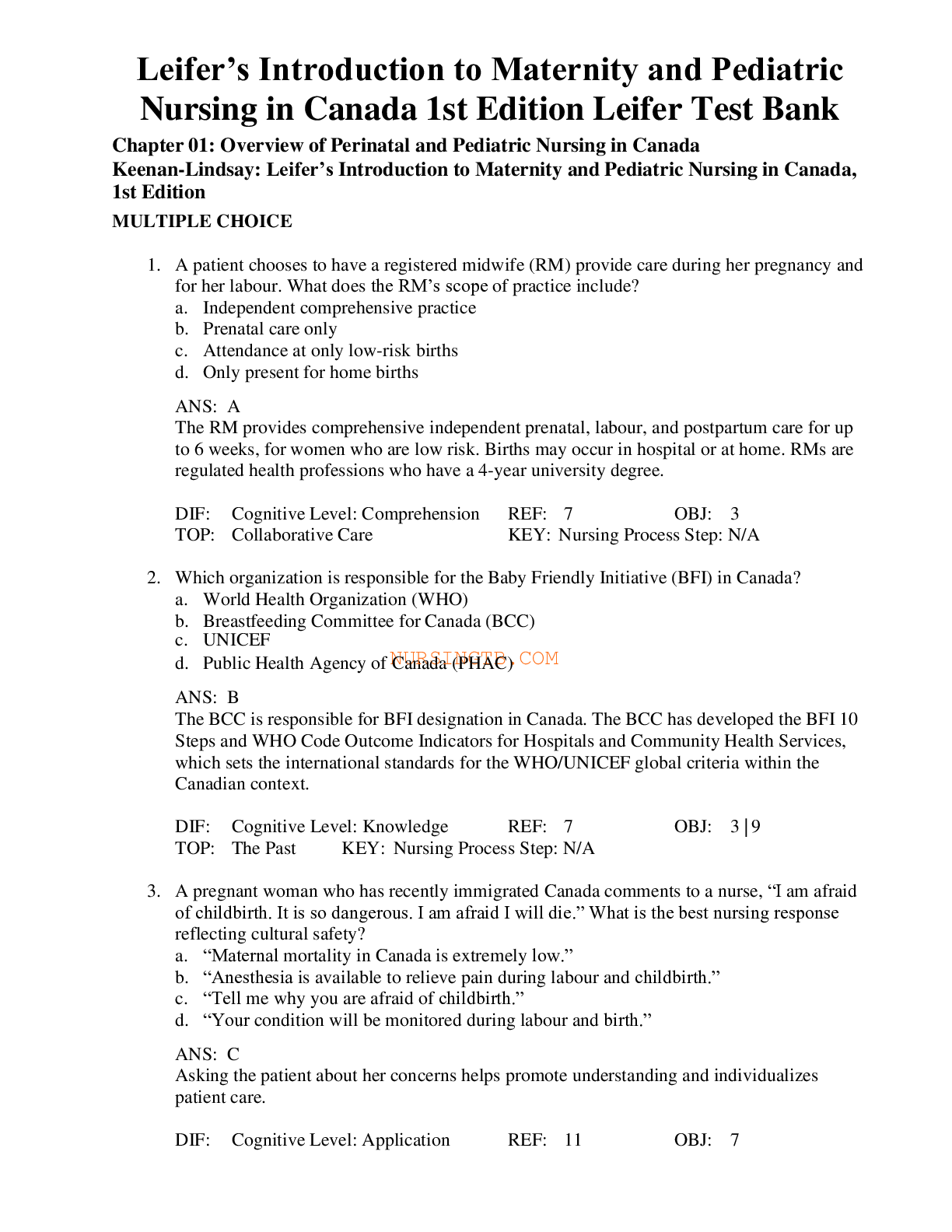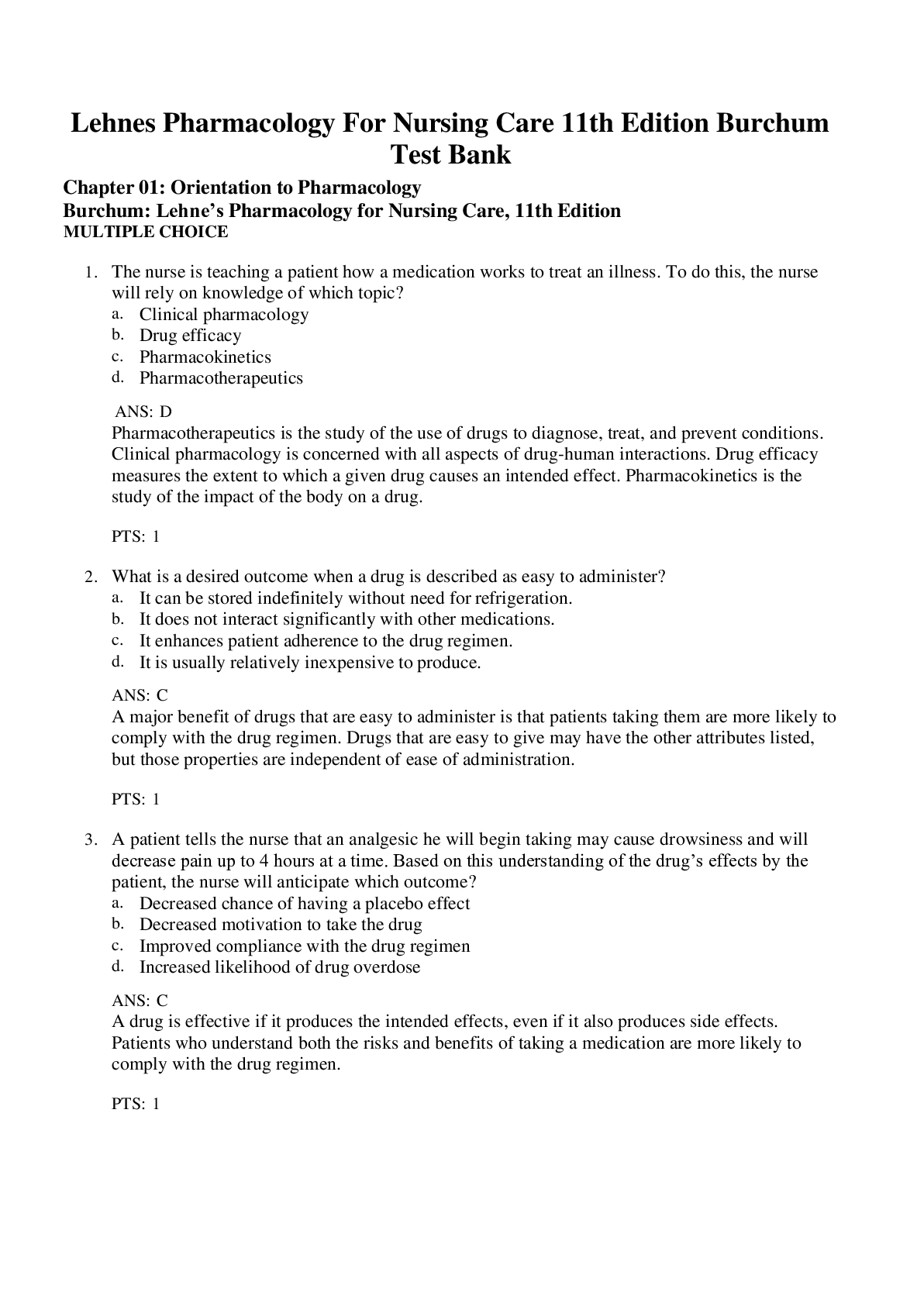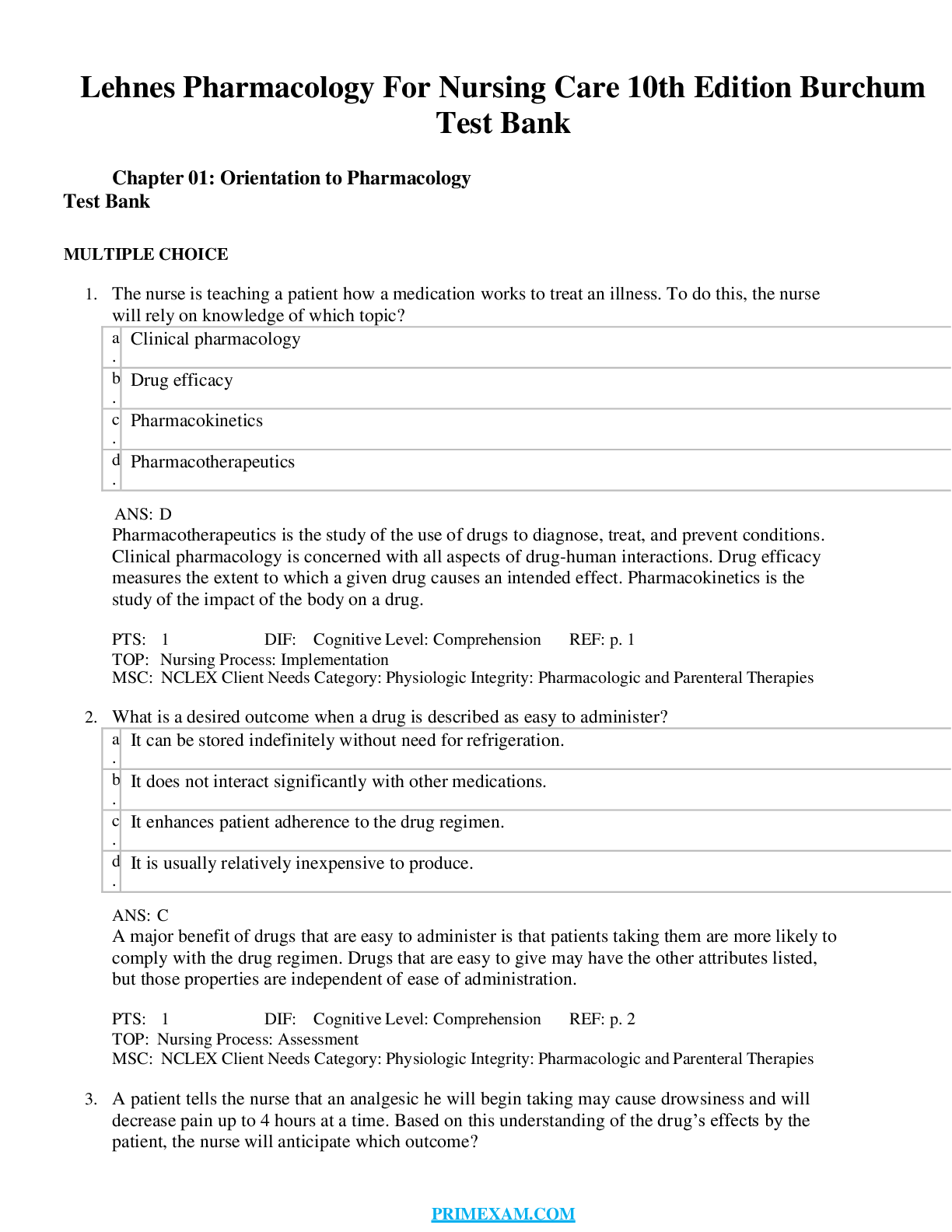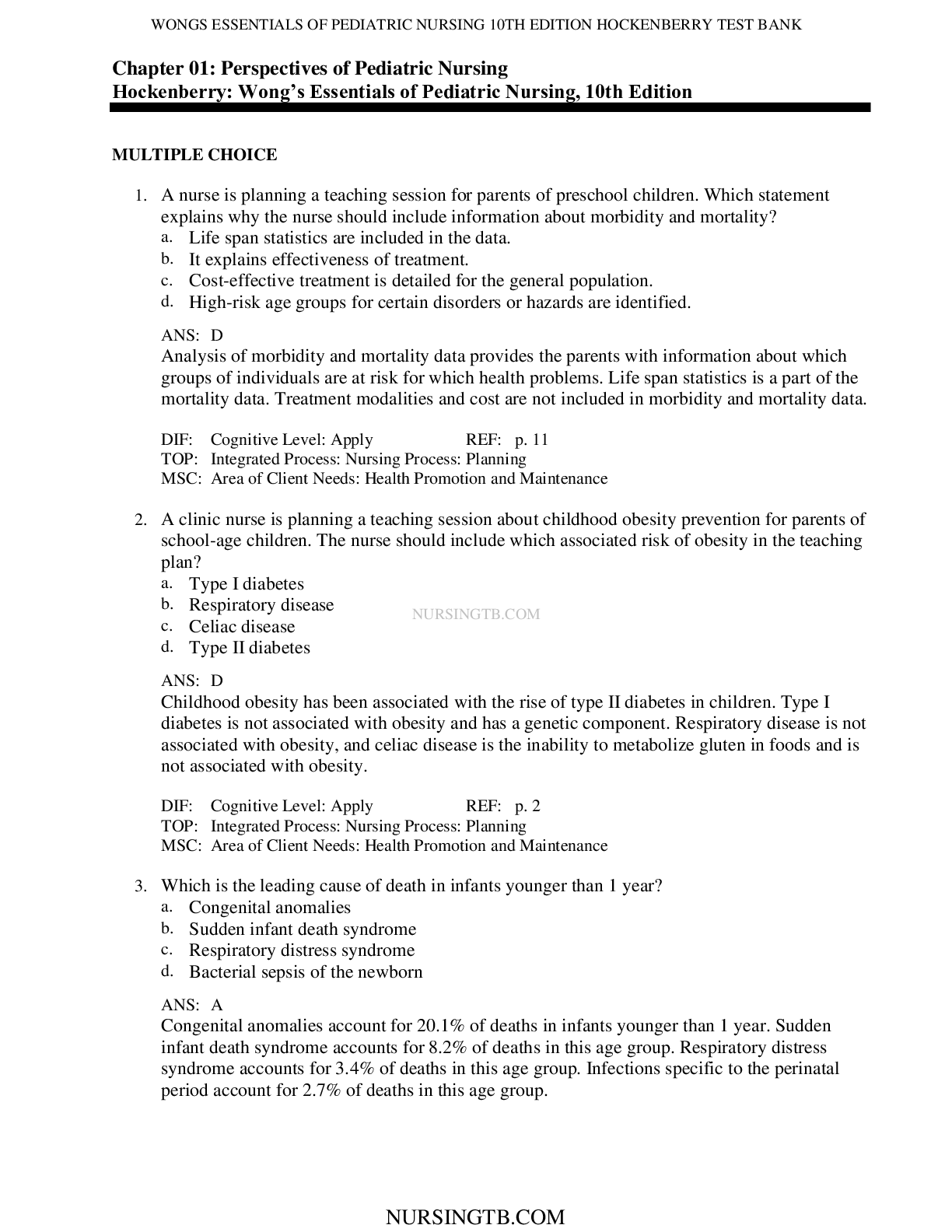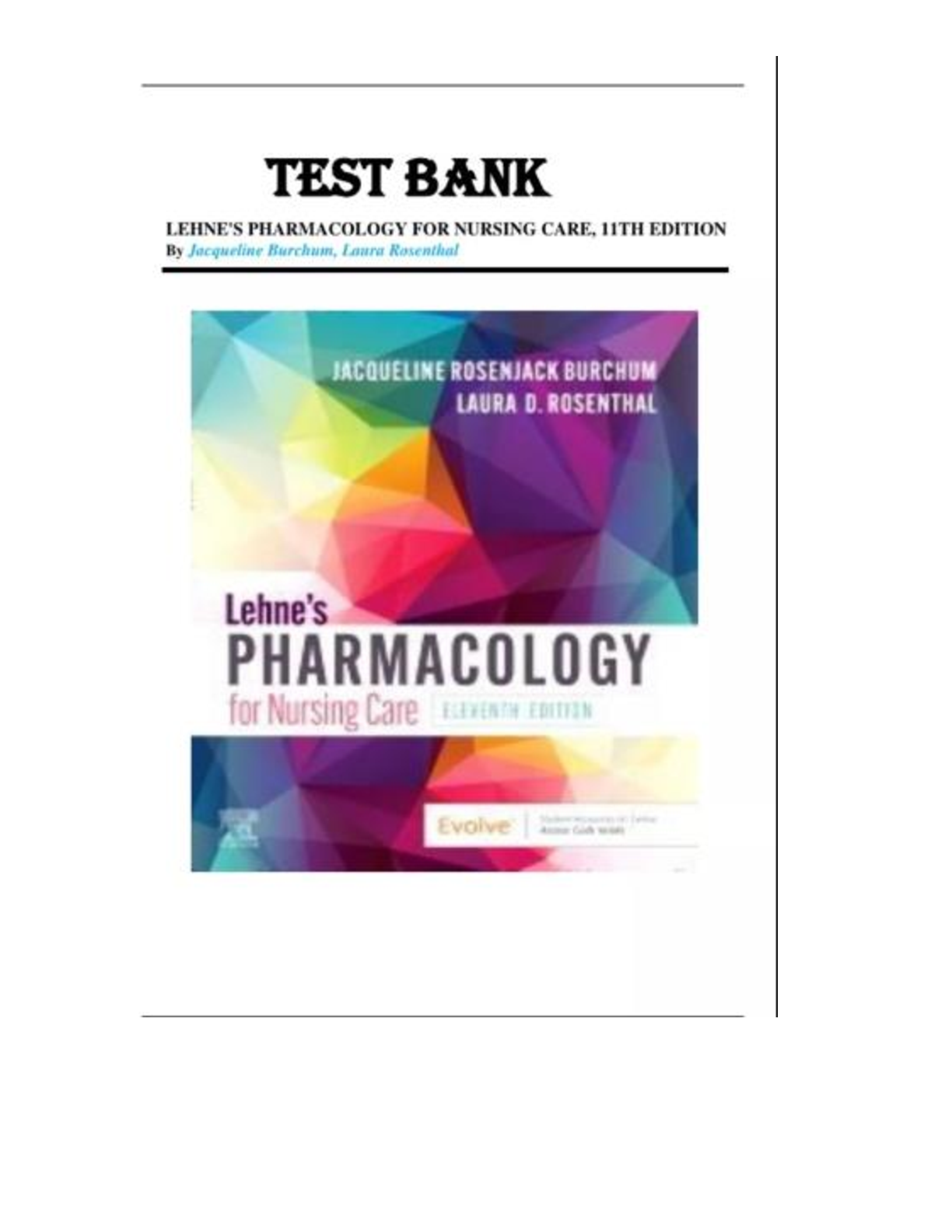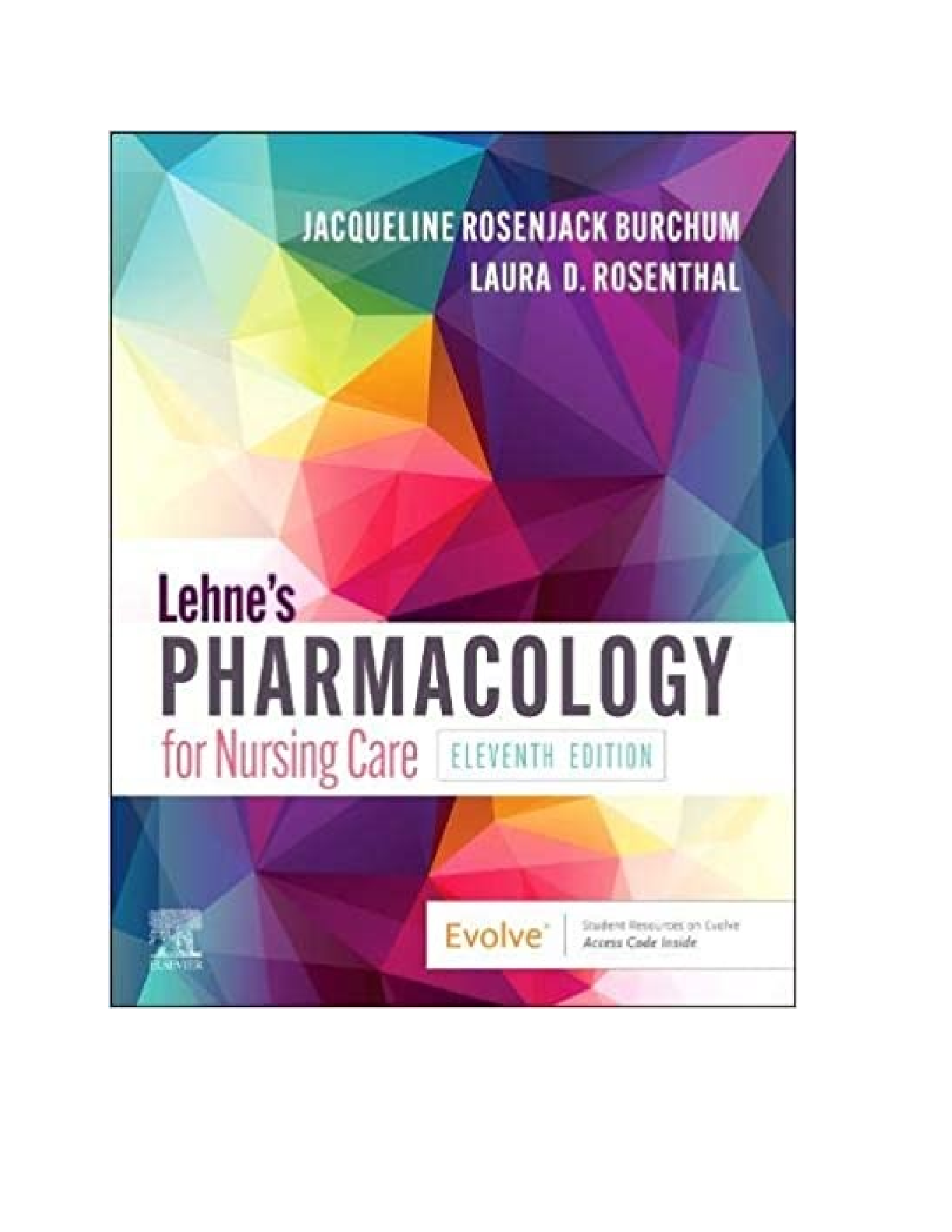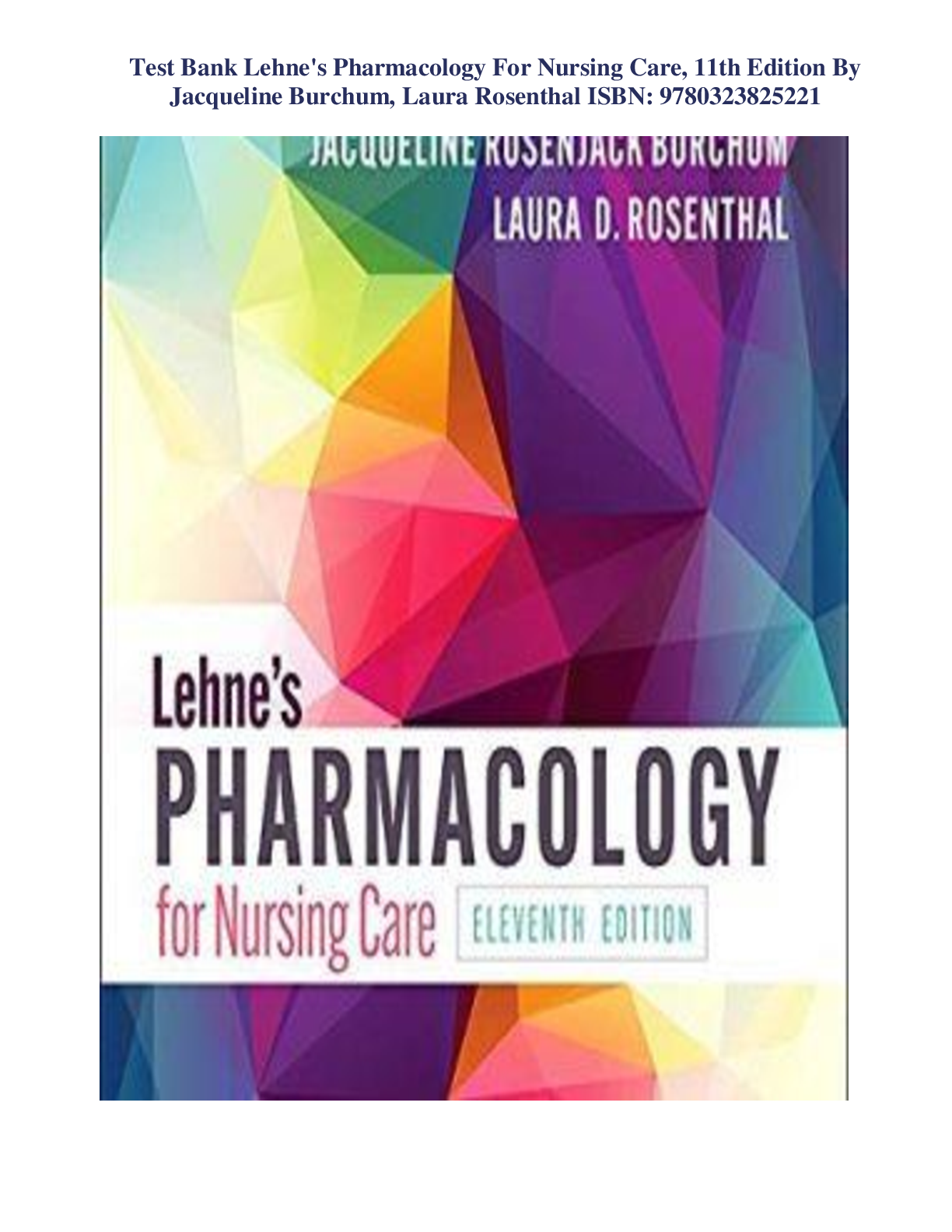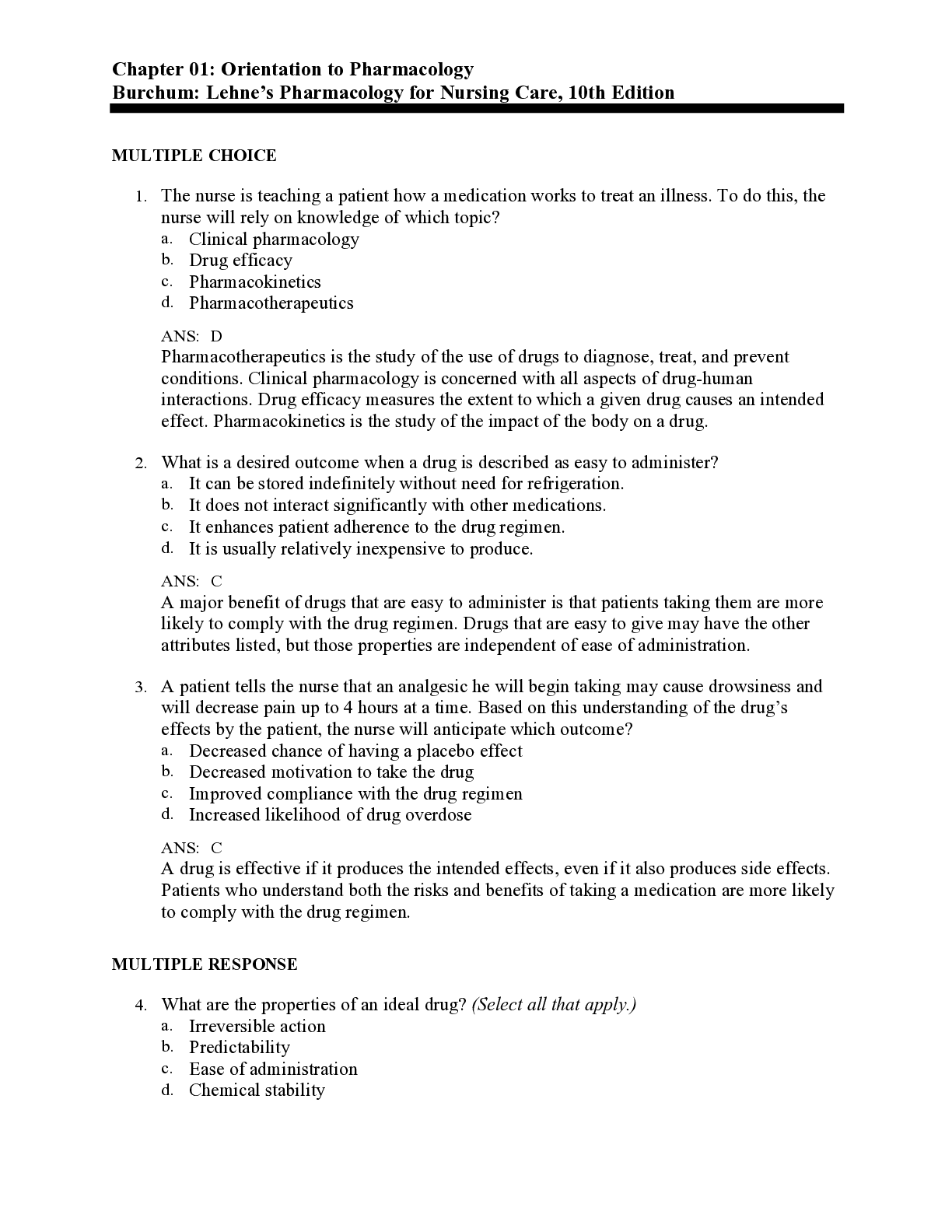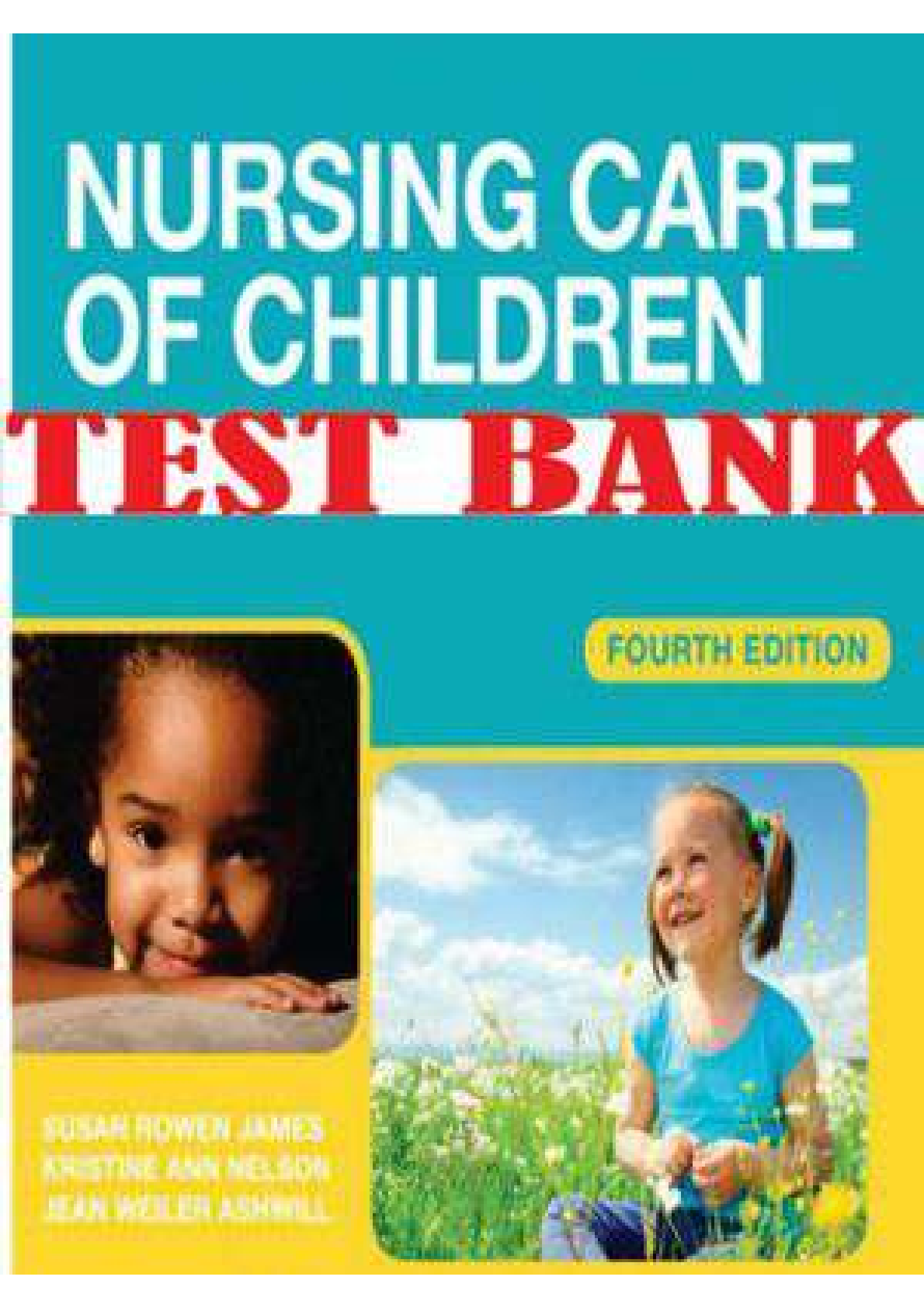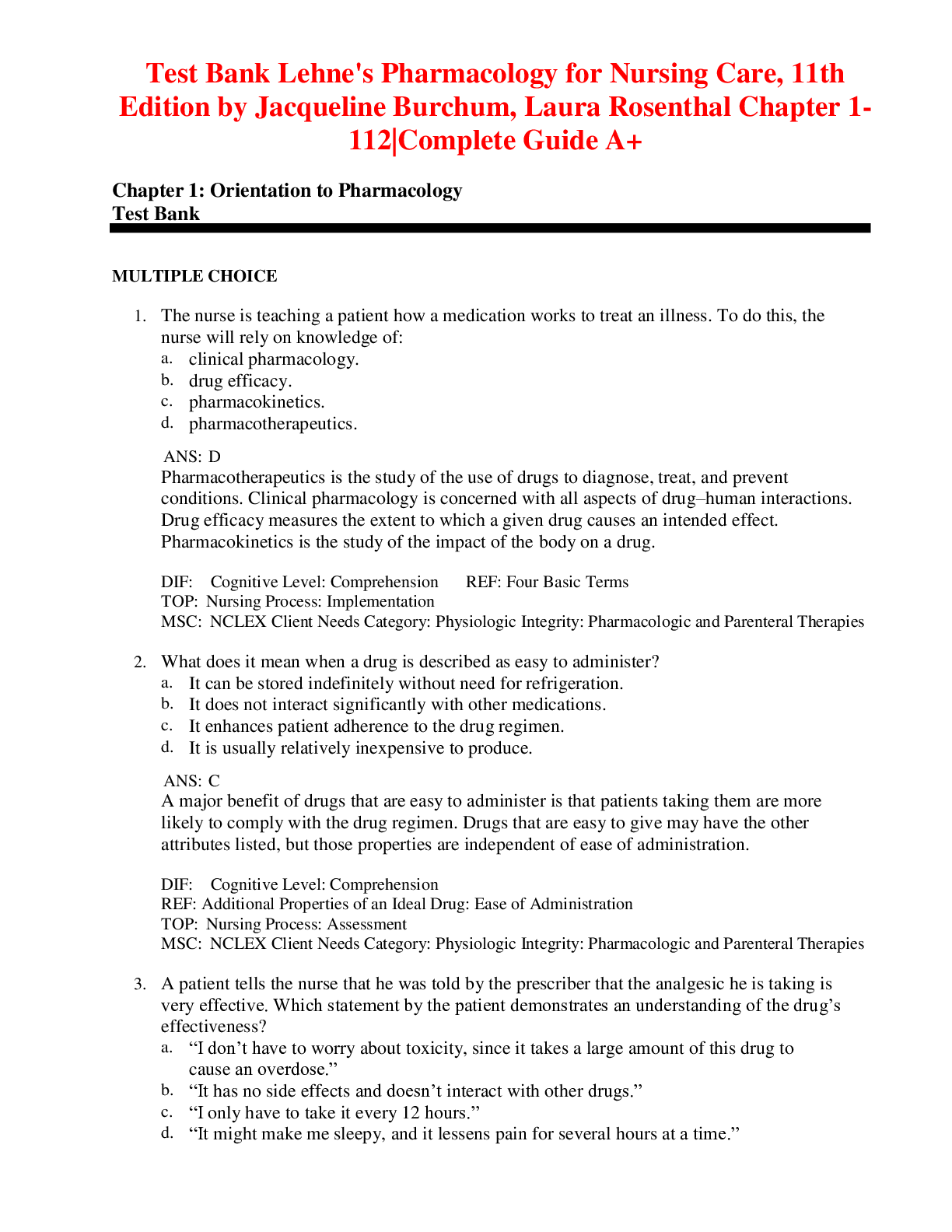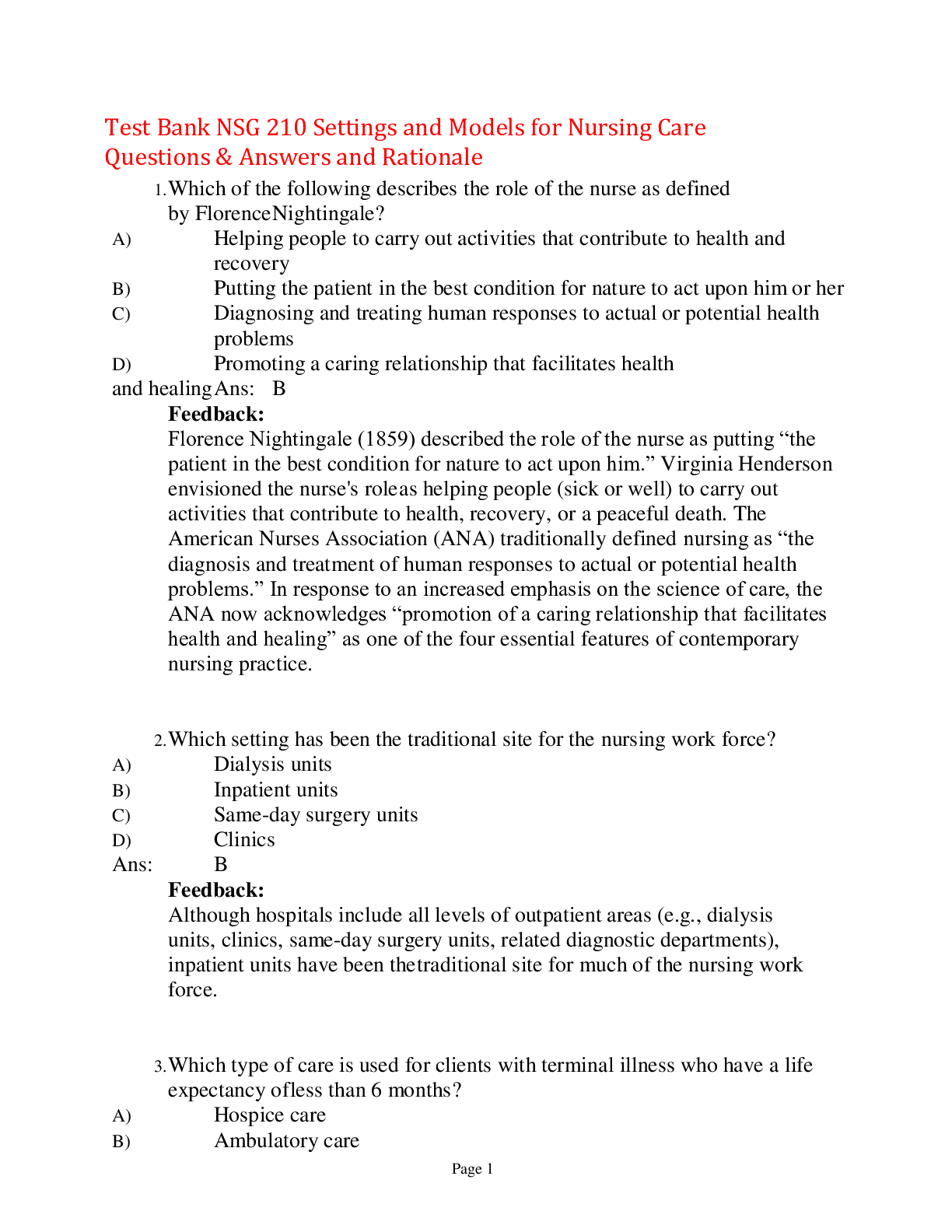*NURSING > TEST BANK > Test Bank For Lehne's Pharmacology for Nursing Care 10th Edition, Complete Test Bank (All)
Test Bank For Lehne's Pharmacology for Nursing Care 10th Edition, Complete Test Bank
Document Content and Description Below
Test Bank For Lehne's Pharmacology for Nursing Care 10th Edition, Complete Test Bank-1. The nurse is teaching a patient how a medication works to treat an illness. To do this, the nurse will rely on k... nowledge of: a. clinical pharmacology. b. drug efficacy. c. pharmacokinetics. d. pharmacotherapeutics. ANS: D Pharmacotherapeutics is the study of the use of drugs to diagnose, treat, and prevent conditions. Clinical pharmacology is concerned with all aspects of drug–human interactions. Drug efficacy measures the extent to which a given drug causes an intended effect. Pharmacokinetics is the study of the impact of the body on a drug. DIF: Cognitive Level: Comprehension REF: Four Basic Terms TOP: Nursing Process: Implementation MSC: NCLEX Client Needs Category: Physiologic Integrity: Pharmacologic and Parenteral Therapies 2. What does it mean when a drug is described as easy to administer? a. It can be stored indefinitely without need for refrigeration. b. It does not interact significantly with other medications. c. It enhances patient adherence to the drug regimen. d. It is usually relatively inexpensive to produce. ANS: C A major benefit of drugs that are easy to administer is that patients taking them are more likely to comply with the drug regimen. Drugs that are easy to give may have the other attributes listed, but those properties are independent of ease of administration. DIF: Cognitive Level: Comprehension REF: Additional Properties of an Ideal Drug: Ease of Administration TOP: Nursing Process: Assessment MSC: NCLEX Client Needs Category: Physiologic Integrity: Pharmacologic and Parenteral Therapies 3. A patient tells the nurse that he was told by the prescriber that the analgesic he is taking is very effective. Which statement by the patient demonstrates an understanding of the drug’s effectiveness? a. “I don’t have to worry about toxicity, since it takes a large amount of this drug to cause an overdose.” b. “It has no side effects and doesn’t interact with other drugs.” c. “I only have to take it every 12 hours.” d. “It might make me sleepy, and it lessens pain for several hours at a time.” ANS: D A drug is effective if it produces the intended effects, even if it also produces side effects. Because no drug is completely safe, the level of toxicity does not determine effectiveness. All drugs have side effects and many react with other substances; these do not affect the drug’s effectiveness. Ease of administration is independent of a drug’s effectiveness. DIF: Cognitive Level: Comprehension REF: Properties of an Ideal Drug TOP: Nursing Process: Evaluation MSC: NCLEX Client Needs Category: Physiologic Integrity: Pharmacologic and Parenteral Therapies MULTIPLE RESPONSE 1. What are the properties of an ideal drug? (Select all that apply.) a. Irreversible action b. Predictability c. Ease of administration d. Chemical stability e. A simple trade name ANS: B, C, D In addition to predictability, ease of administration, and chemical stability, other properties include a reversible action so that any harm the drug may cause can be undone and a simple generic name, because generic names are usually complex and difficult to remember and pronounce. DIF: Cognitive Level: Comprehension REF: Properties of an Ideal Drug | Additional Properties of an Ideal Drug TOP: Nursing Process: Assessment MSC: NCLEX Client Needs Category: Physiologic Integrity: Pharmacologic and Parenteral Therapies 2. Before administering a medication, what does the nurse need to know to evaluate how individual patient variability might affect the patient’s response to the medication? (Select all that apply.) a. Chemical stability of the medication b. Ease of administration c. Family medical history d. Patient’s age e. Patient’s diagnosis ANS: C, D, E The family medical history can indicate genetic factors that may affect a patient’s response to a medication. Patients of different ages can respond differently to medications. The patient’s illness can affect how drugs are metabolized. The chemical stability of the medication and the ease of administration are properties of drugs. DIF: Cognitive Level: Analysis REF: Sources of Individual Variation TOP: Nursing Process: Implementation MSC: NCLEX Client Needs Category: Physiologic Integrity: Reduction of Risk Potential Chapter 2: Application of Pharmacology in Nursing Practice Test Bank MULTIPLE CHOICE 1. A patient is using a metered-dose inhaler containing albuterol for asthma. The medication label instructs the patient to [Show More]
Last updated: 1 year ago
Preview 1 out of 576 pages
.png)
Reviews( 0 )
Document information
Connected school, study & course
About the document
Uploaded On
Feb 08, 2023
Number of pages
576
Written in
Additional information
This document has been written for:
Uploaded
Feb 08, 2023
Downloads
0
Views
50

.png)
.png)
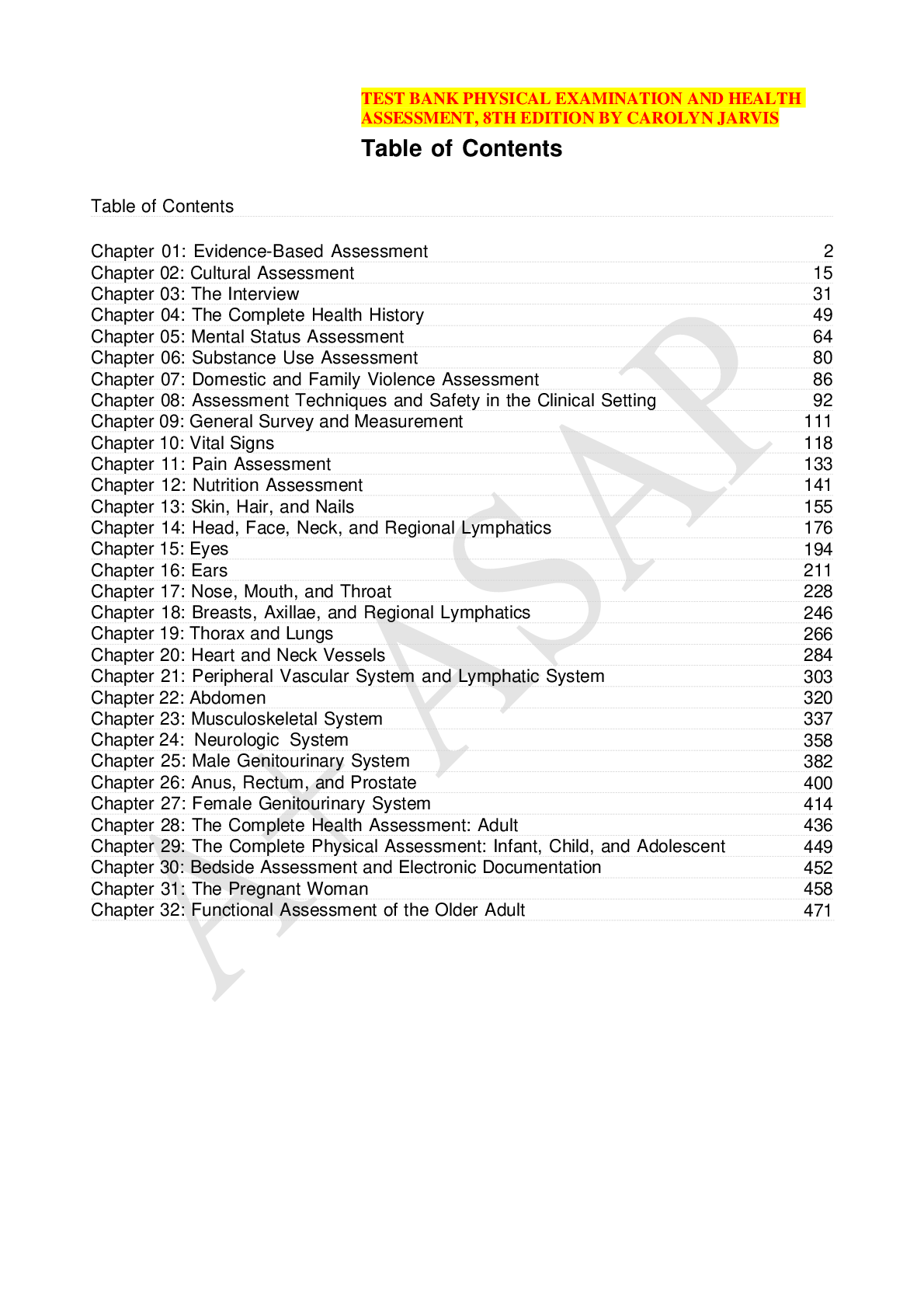
.png)
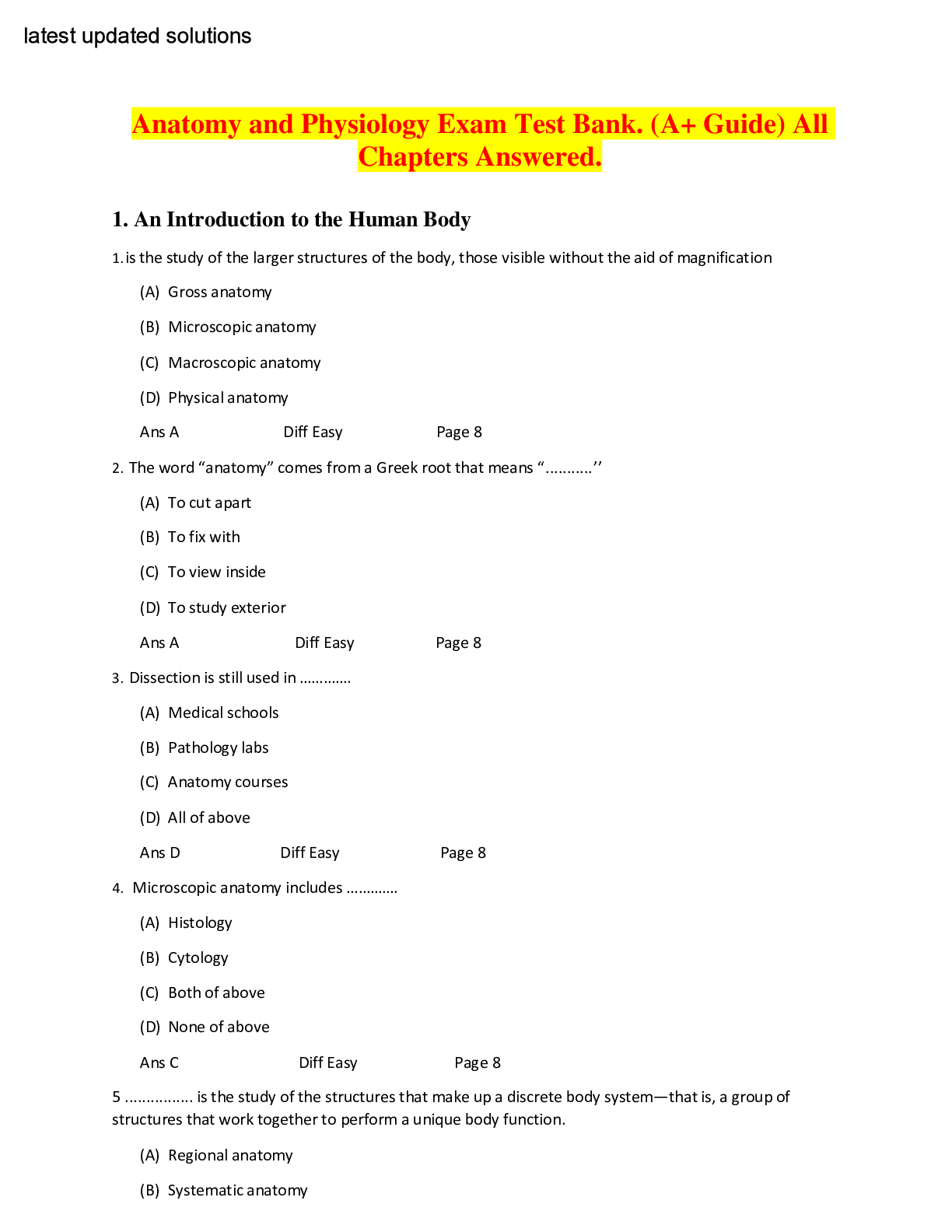
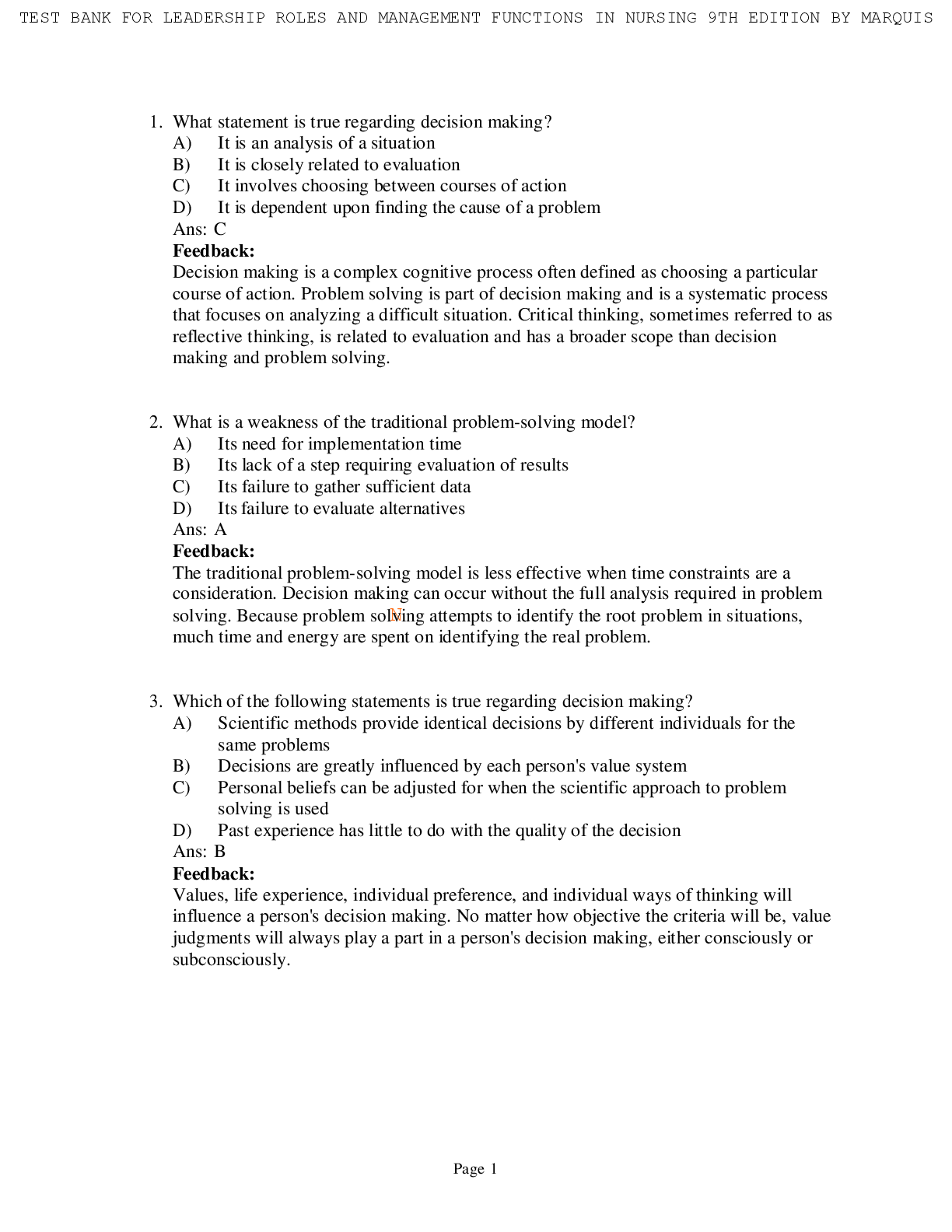
.png)
.png)
